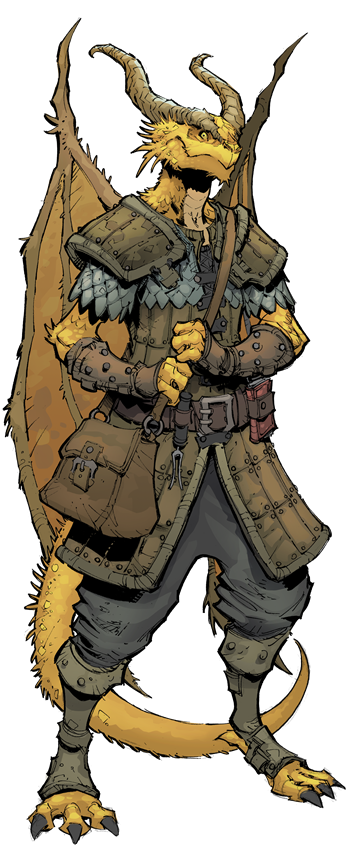 We’ve completed our second full rotation of the twelve classes in the Player’s Handbook, not to mention taken a deep dive into the first 5 levels of D&D’s thirteenth class, the inventive and arcane Artificer! This wave of the Class 101 series will appraise every subclass within the Player’s Handbook and break down each subclass’s strengths, weaknesses, thematic elements, and everything else a player would want to know before playing that subclass. Because of this, you will need to own the Player’s Handbook (or purchase the subclass a la carte on the Marketplace) in order to make full use of this series.
We’ve completed our second full rotation of the twelve classes in the Player’s Handbook, not to mention taken a deep dive into the first 5 levels of D&D’s thirteenth class, the inventive and arcane Artificer! This wave of the Class 101 series will appraise every subclass within the Player’s Handbook and break down each subclass’s strengths, weaknesses, thematic elements, and everything else a player would want to know before playing that subclass. Because of this, you will need to own the Player’s Handbook (or purchase the subclass a la carte on the Marketplace) in order to make full use of this series.
Clerics of radiant or fiery gods may find themselves drawn like moths to the Light Domain, an aspect of divinity that embodies two very different aspects of light—the soothing comfort of a sunny day, and the overwhelming pain of unrelenting radiance.
If you’re playing in the Forgotten Realms, you may wish to follow the Light Domain if you’re a cleric of Lathander the Morninglord, Helm the Vigilant One, Milil the Lord of Song, or Sune, Lady Firehair. You can learn more about these gods in chapter 1 of the Sword Coast Adventurer’s Guide.
If you’re playing in Eberron, clerics of Dol Arrah, goddess of sunlight and honor are often drawn to the Light Domain. Dol Arrah is a member of the Sovereign Host, a group of gods that are worshiped across Khorvaire. These gods aren’t discussed much in Eberron: Rising from the Last War, but you can learn more about them on the fan-made Eberron wiki.
If you’re playing in Wildemount, you may wish to follow the Light Domain if you’re a cleric of Corellon the Arch Heart, Pelor the Dawn Father, or Raei the Everlight. In Exandria, there are some demigods that can grant clerical powers of Light as well. These include Desirat the Twilight Phoenix, the Luxon, and Xalicas the Wounded. You can learn more about these gods in chapter 1 of Explorer’s Guide to Wildemount.
If you’re playing in the Greek Myth-inspired setting of Theros, your choice of god is incredibly important to all characters, not just clerics. If you want to play a cleric that wields the power of the Light Domain, consider choosing either Ephara, god of the polis, or Heliod, god of the sun, and reading their description closely. You can read these descriptions in chapter 2 of Mythic Odysseys of Theros.
Check out other articles in the Cleric 101 series, like our broad overview in Cleric 101: A Beginner’s Guide to Playing the Divine, and Cleric 101: Life Domain and Cleric 101: Knowledge Domain. If you’re interested in playing other classes, check out the entire Class 101 series.
Story of the Light Domain
"The light of Lathander guides me, beast of the night."
A half-elf cleric leaned on his staff amidst a moonless forest. A creature stood across the clearing from him, its fur singed and its monstrous chest heaving. The creature was humanoid in shape, but horrifically tall and muscular, and covered from snout to paw in gray fur. The beast had the head of a wolf, and yellow eyes that shone like candles in the darkness. The werewolf smiled, revealing rows of knife-sharp teeth.
"I thrive in the light of the moon, priest," the werewolf snarled. "You wear naught but cloth, which my claws can so easily shred, and are made of tender flesh that by jaws can pierce and rend. Your sparkles cannot kill me."
The cleric gripped his staff tightly as the lycanthrope tensed its haunches, preparing to strike. He blinked sweat out of his eyes and steeled himself. "You may thrive in the moon, monster, but I wield a power greater still. Even in the darkest night, the dawn will never abandon me!" He raised his staff and his free hand high, and a blazing orb of golden flames burst into being before him. He twisted his body as if throwing a ball and groaned in painful exertion, and hurled the sphere towards the wolf. The sphere of burning magic struck the ground and traced a circle around the monster, lighting the grass alight before it slammed into the wolf's side.
Light Domain Features
A divine domain is a suite of abilities innately tied to an aspect of a god’s divinity. A god may possess many domains within their expansive power, but a mortal being can only ever receive the powers of a single one. Clerics who receive the power of the Light Domain carry both temperance and wrath within themselves, seeking to shine light into dark places. This can be for good or for ill, for some darknesses were never meant to be dispelled. These clerics gain several features that demonstrate their worldliness, as well as their aptitude for acquiring new knowledge.
The cleric gains access to five subclass features at 1st, 2nd, 6th, 8th, and 17th level. You can read all of the Light Domain features in the Player’s Handbook. In summary, your subclass features allow you to:
- Learn the light cantrip.
- Create a Warding Flare to cause your foes’ attacks against you to falter.
- Channel your god’s divine power to dispel magical darkness and sear foes with radiant light.
- Use your Warding Flare when your allies are under attack.
- Improve the destructive power of your cantrips.
- Surround yourself with light that dispels darkness and empowers your own fiery or radiant spells.
Benefits of the Light Domain
The Light Domain is a great choice for generalist clerics. Their Domain Spells and other class features support a cleric that wants to deal damage in combat, but also protect allies. Notably, your Domain Spells feature grants you a number of combat spells that would normally be unavailable to clerics:
Being able to use fireball starting at 5th level is a huge boon for combat clerics, as it may be the most efficient damage spell in the entire game. Many of these other spells are useful too, since outside of guiding bolt, clerics have precious few powerful damage spells at low levels.
The Light Domain also presents self-defense as a core subclass feature in the form of Warding Flare—and then upgrades this feature at 6th level, allowing you to protect your allies with it as well. Most importantly, Warding Flare and its upgraded variant can be used as a reaction, and while magical, aren’t spells. This lets you use it in conjunction with spells that require an action or a bonus action to cast.
Coupled with the usual spells available to clerics, the Light Domain has a robust arsenal of features that makes them useful as both a high-damage casting powerhouse and a worthy support caster.
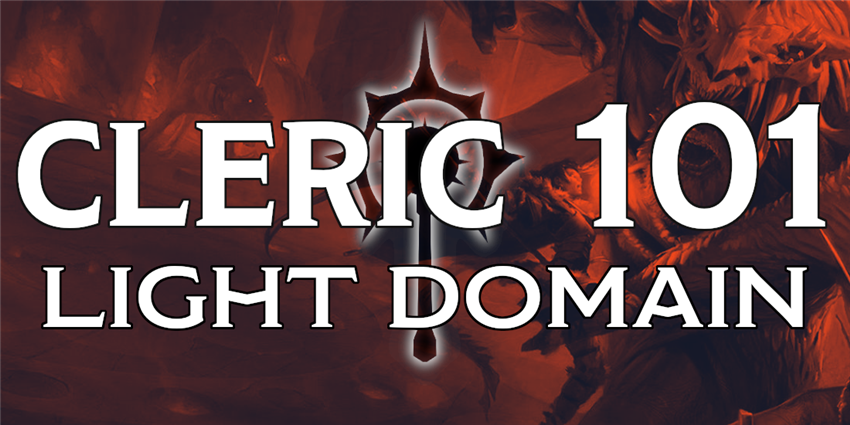
Drawbacks of the Light Domain
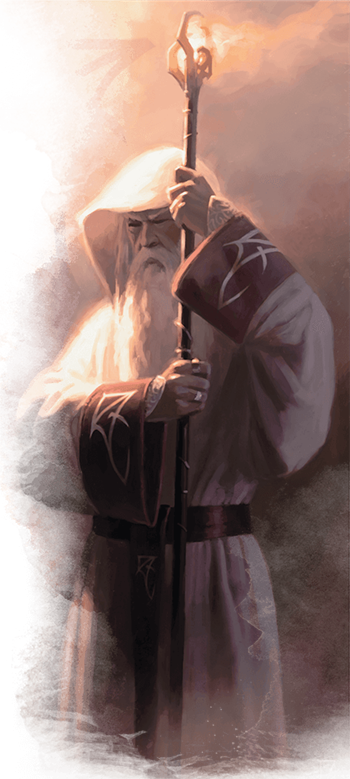 Despite being a generalist, the Light Domain’s greatest drawback is actually that their role is too narrow. Sound strange? Here’s why.
Despite being a generalist, the Light Domain’s greatest drawback is actually that their role is too narrow. Sound strange? Here’s why.
The Light Domain grants a lot of combat abilities, but it has no class features that allow them to be useful in social or exploration encounters. Of course, any player can have fun roleplaying even without mechanical support—but one needs only look at a College of Eloquence bard or even an Assassin rogue to see how class features can make them more adept at emerging victorious from non-combat encounters. If your campaign rarely features social or exploration encounters—or at least, rarely features non-combat encounters where success or failure have rewards or consequences—then this drawback may not be as meaningful to you.
However, there is one weak link in the Light Domain’s otherwise-powerful arsenal of combat spells. Despite being thematically focused around light, the subclass’s Domain Spells focus overwhelmingly on spells that deal fire damage. Not only is this an odd thematic mismatch, but fire damage is one of the most frequently resisted damage types in the game, and it’s also one of the most common damage types that monsters are completely immune to, as well!
If you’re playing in a campaign that features a lot of fiends, Light Domain clerics will quickly discover that their primary element is next to useless against their unholy foes—an odd situation for holy clerics to find themselves in. If you’re playing a home game where you’re able to create house rules, consider swapping Potent Spellcasting (the Light Domain’s 8th-level feature) for this alternative:
Flames of Celestia
Starting at 8th level, whenever you cast a spell that deals fire damage, you can deal radiant damage instead.
You can use this feature a number of times equal to your Wisdom modifier (minimum of once). You regain all expended uses when you finish a long rest.
Suggested Build
If you’re playing a Light domain cleric from 1st level, you should choose a race that gives you a bonus to your Wisdom score. Since you’re not proficient in heavy armor, you may also want to increase your Dexterity score to improve your Armor Class.
The hill dwarf race grants you a bonus to Wisdom, plus improves your Constitution and hit points, allowing you to weather hits that might incapacitate another cleric. Wood elves grant a useful bonus to both Dexterity and Wisdom. Finally, races with bonuses you can assign to any trait, such as a variant human or a half-elf, also allow you to allocate your ability score bonuses as you see fit, as well as granting extra skill proficiencies that can improve your out-of-combat abilities.
As usual, your character’s background is up to you. Many clerics come from an acolyte background, having been trained in the priestly arts since birth, but others come to faith later in life. Perhaps you were am Urchin who was saved from poverty by a kindly priest and dedicated your life to the service of their god. Or, maybe you were a Folk Hero who prayed to a god of light before every battle, and whose faith grew with every victory they won.
Selecting EQUIPMENT when creating your cleric is a good idea. Since you aren’t proficient in either heavy armor or martial weapons, you’ll want to select a mace and scale mail (if your Strength is higher than your Dexterity) or leather armor (if your Dexterity is higher). Details like what type of holy symbol you wear are aesthetic decisions, and thus entirely up to you.
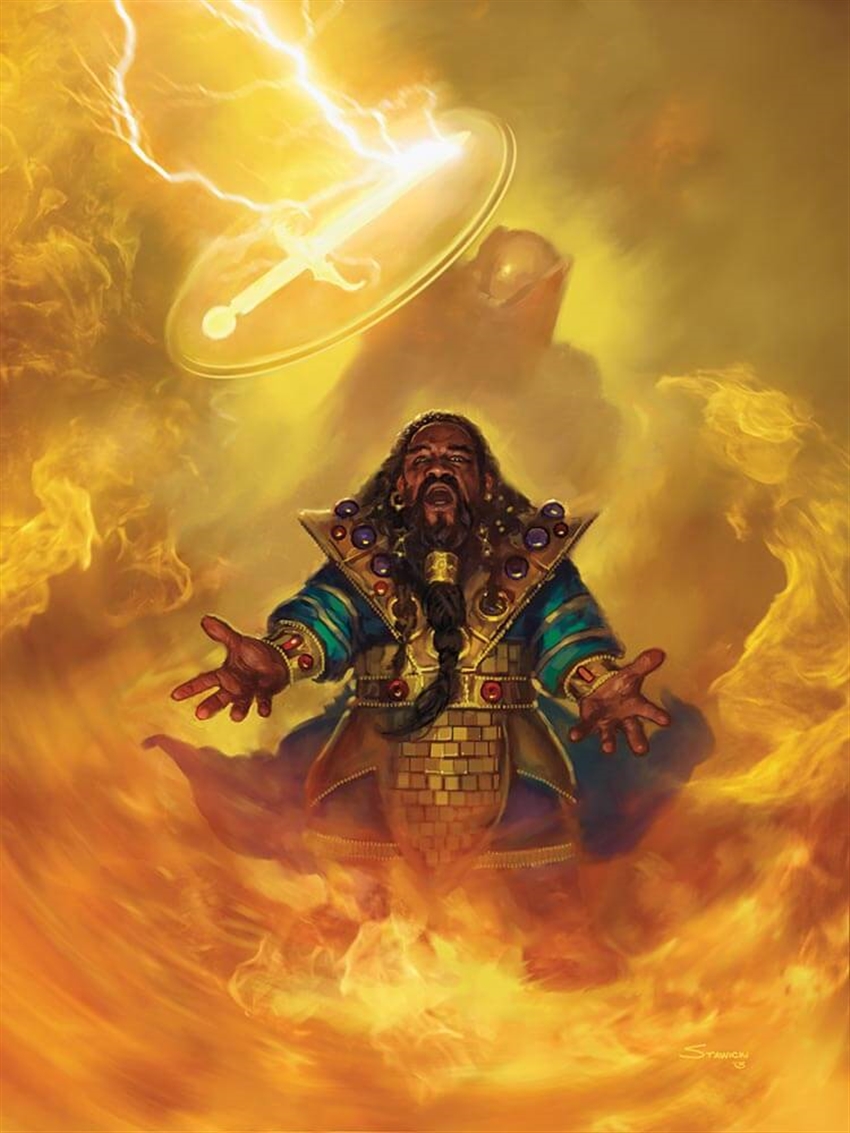
Spells
Fortunately, as a cleric, you have the entire cleric spell list available to you whenever you prepare spells at the start of the day. Nevertheless, when playing a cleric, it can help to have a typical spell list that your cleric always has prepared—unless you specifically choose otherwise. This can save you the trouble of having to re-select all your spells at the start of each day. Since your Domain Spells grant you a suite of useful combat spells, you may want to gear your spell selection towards spells that will help you in social or exploration scenarios.
As a 1st-level cleric, you know three cantrips and can prepare a number of 1st-level spells equal to 1 + your Wisdom modifier. Odds are, your Wisdom modifier will be either +2 or +3 right now, so you’ll be able to choose either three or four 1st-level spells whenever you complete a long rest. As a character that values both offense and support, the guidance and sacred flame cantrips will give you a little both that you can always rely on. Beyond this, your cantrips are simply a matter of preference, and almost any will serve you well.
You can prepare any 1st-level spells from the cleric spell list, but you can use this list of suggested spells to prepare an all-purpose spell loadout that will serve you in most circumstances. As you go on adventures and learn what dangers your character tends to face, you can personalize your spell loadout. Try to choose one spell labeled SUPPORT, one labeled DEFENSE, and one labeled OFFENSE. If you have a high Wisdom score and can prepare additional spells, choose others of your choice. Note that this list only includes some spells from the Player's Handbook, so if you want to choose more unusual spells, or have other sources like Xanathar's Guide to Everything, you'll have to do a little self-directed research. This list is just here to get you started if this is your first time playing a Light Domain cleric.
(Note that, thanks to your Domain Spells feature, you always have the burning hands and faerie fire spells prepared, and they don’t count against the number of spells you can prepare each day.)
- Bless (SUPPORT)
- Bane (DEFENSE)
- Detect magic (EXPLORATION) [this spell can be cast a ritual, which means you can cast it without expending a spell slot, if you spend an extra 10 minutes casting it]
- Guiding bolt (OFFENSE)
- Healing word (SUPPORT)
- Inflict wounds (OFFENSE)
- Protection from evil and good (DEFENSE)
- Shield of faith (DEFENSE)
Feats
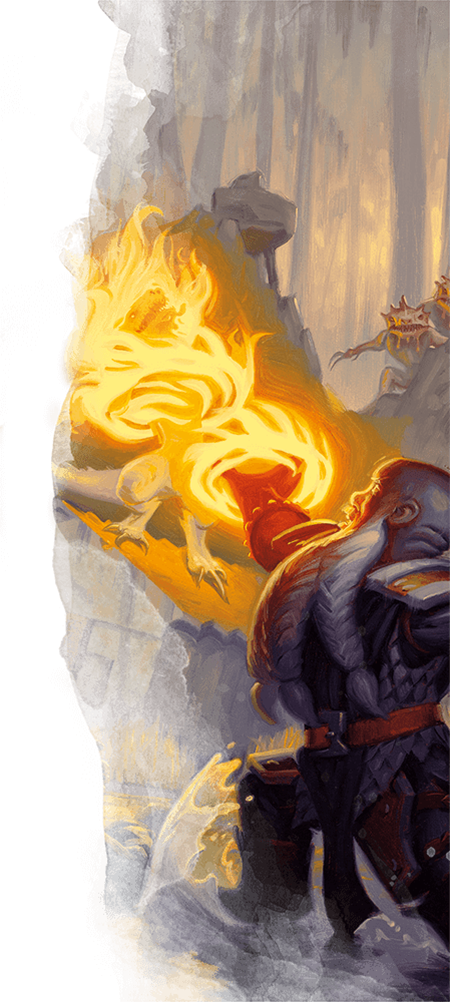 Once you’ve improved your Wisdom score to 18 or 20, you can increase your power with a few useful feats. The following feats are good picks for Light Domain clerics, and will improve your reliability in your own desired area of expertise:
Once you’ve improved your Wisdom score to 18 or 20, you can increase your power with a few useful feats. The following feats are good picks for Light Domain clerics, and will improve your reliability in your own desired area of expertise:
Elemental Adept (Fire). If you’re not playing with the house rule presented in the “Drawbacks of the Light Domain” section above, you’ll need some way to overcome fire resistance when you inevitably face foes that scoff at your fire attacks.
Healer. You may prefer to spend your spell slots on destructive magic, rather than healing spells. In that case, this feat will help you conserve low-level spell slots by healing with a healer’s kit instead of cure wounds.
Heavily Armored. If you’re more of a “fire and brimstone” sort of cleric, you may want to improve your Armor Class by stepping into a suit of heavy armor. This works best if you’ve also raised your Strength score to 15 or higher, so that you aren’t inhibited by their Strength requirement!
Lucky. This feat is always useful. It’s one of the less interesting, but more broadly useful, feats in the game. You can be the judge of whether or not that’s fun for you.
Resilient (Constitution). You have a number of powerful spells that you must concentrate on to maintain. Taking damage in combat can spoil the full effects of a useful spell, so gaining proficiency in Constitution saving throws make you a much more reliable spellcaster!
If you want more advice for building a cleric, check out Cleric 101. Have you ever played a Light Domain cleric? What advice would you give to players that want to make a character like this? Next time, Class 101 will cover the druidic Circle of Spores, an eerie servant of decay from Guildmaster's Guide to Ravnica. What's your cleric character like? Let us know in the comments!
Create A Brand-New Adventurer Acquire New Powers and Adventures Browse All Your D&D Content
 James Haeck is the lead writer for D&D Beyond, the co-author of Waterdeep: Dragon Heist, Baldur's Gate: Descent into Avernus, and the Critical Role Explorer's Guide to Wildemount, a member of the Guild Adepts, and a freelance writer for Wizards of the Coast, the D&D Adventurers League, and other RPG companies. He lives in Seattle, Washington with his fiancée Hannah and their animal companions Mei and Marzipan. You can find him wasting time on Twitter at @jamesjhaeck.
James Haeck is the lead writer for D&D Beyond, the co-author of Waterdeep: Dragon Heist, Baldur's Gate: Descent into Avernus, and the Critical Role Explorer's Guide to Wildemount, a member of the Guild Adepts, and a freelance writer for Wizards of the Coast, the D&D Adventurers League, and other RPG companies. He lives in Seattle, Washington with his fiancée Hannah and their animal companions Mei and Marzipan. You can find him wasting time on Twitter at @jamesjhaeck.








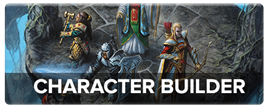
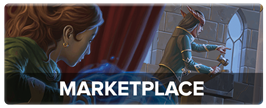
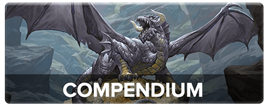
-
View User Profile
-
Send Message
Posted Aug 24, 2020Awesome article
-
View User Profile
-
Send Message
Posted Aug 24, 2020Almost got first comment! Second though 😊 love your articles James
-
View User Profile
-
Send Message
Posted Aug 24, 2020One of my favorite things you do with your articles about subclasses comes in the "drawback" sections where you suggest some home brew rules to help balance and improve the subclass. I love everyone in the group being able to be relatively equal on ground level, and your suggestions really help with that. Another great article!
-
View User Profile
-
Send Message
Posted Aug 24, 2020Wonderful article, as always! I particularly like the Flames of Celestia variant. One quick catch though: under Suggested Build, it says, "Wood elves grant a useful bonus to both Dexterity and Wisdom, as do lightfoot halflings." Lightfoot halflings get a bonus to Dexterity and Charisma, not Dexterity and Wisdom. Fittingly, this came to mind because a while back I played a halfling light cleric for a one-shot!
-
View User Profile
-
Send Message
Posted Aug 24, 2020Good article but fire isn’t the damage type that the most monsters are completely immune to, poison is. If you look at all monsters in the D&D beyond database, minus the Rick and Morty content, you will find that 124 (7%) of them are immune to fire damage while 467 (27%) of them are immune to poison damage.
also, an often overlooked but fairly potent use of the Elemental Adept (fire) feat is to overcome the resistance to fire damage that all creatures gain while completely submerged underwater. In a setting like Ghosts of Saltmarsh being able to dole out fire damage to submerged creatures makes the entire character much more viable in combat.
-
View User Profile
-
Send Message
Posted Aug 24, 2020Great article, thanks!
On the spell list, though, where is cure wounds?
Also, I really like the house rule to do radiant damage.
-
View User Profile
-
Send Message
Posted Aug 24, 2020Once played an aarakocra light cleric who would fly in the (normally with the sun behind or above him) and begin smiting enemies with the burning light of Pelor. Was a fun game.
-
View User Profile
-
Send Message
Posted Aug 24, 2020Currently playing an aasimar light domain cleric dedicated to serving Heliod. She's BA but she's also baby. 😊
-
View User Profile
-
Send Message
Posted Aug 24, 2020While I like the concept of the "Fires of Celestia" ability, in execution in feels weak. You trade one of the biggest combat boosts you get, Potent Cantrip, for an ability that allows you to ignore resistance. This trade off seems fair, but capping the uses of Fires to once per wisdom mod per long rest seems harsh. I would rework it to simply allow spells that you cast that deal fire damage ignore resistance and immunity; powerful, but probably on parity with potent cantrip.
-
View User Profile
-
Send Message
Posted Aug 25, 2020I can't wait until Warlock 101: Hexblade
-
View User Profile
-
Send Message
Posted Aug 25, 2020You really get more than enough radiant and necrotic damage to deal with fire resistant encounters anyway. Guiding Bolt, Spirit Guardians, Spiritual Weapon, Guardian of Faith, Harm, your Channel Divinity...
Guiding Bolt and Spiritual Weapon are already some of the best spells to deal with Magic Resistant fiends.
-
View User Profile
-
Send Message
Posted Aug 25, 2020What type of Aasimar? You convinced me to make one as Aasimar are my fave race. :D
-
View User Profile
-
Send Message
Posted Aug 25, 2020I've always enjoyed the Action economy of Light Clerics...their Reaction can be used nearly every turn to help mitigate hits, to themselves or allies.
Their Channel Divinity is a decent AOE attack as an Action, which allows a bonus action spell to be used (like Spiritual Weapon!).
And their additional spells are incredibly useful.
While they are the token "blasty" cleric, they offer enough tactical versatility to still make them a blast to play.
-
View User Profile
-
Send Message
Posted Aug 25, 2020Been playing as a light cleric in a recent campaign, and I've got to say its become one of my favourite subclasses. Because your domain spells and special channel divinity option are damage focused (and pretty heavy hitting at that) I can use my prepared spells for utility options without worrying about being caught short going into a fight. I can buff that party with the spells I choose and fall back on domain spells to dish out damage if need be. Also the usefulness of Warding Flare cannot be understated, it has saved our asses so many times over now
-
View User Profile
-
Send Message
Posted Aug 25, 2020Light Domain is my favorite cleric domain! Great utility and perfect mix of offensive and support spells.
-
View User Profile
-
Send Message
Posted Aug 25, 2020I've played an Aasimar Light Domain cleric to 17th level, and this is a great article! I would also say it's extremely useful to go through the Monster Manual and make a complete list of all creatures affected by sunlight in various ways — to help the DM remember of course ;) Perhaps a little meta-gamey but you're a Light Domain cleric, I think you would know all about monsters sensitive to the light (and how to bring it to them...)
-
View User Profile
-
Send Message
Posted Aug 25, 2020"Flames of Celestia" should be an official option. That alone would go a long way towards making this domain useful.
-
View User Profile
-
Send Message
Posted Aug 25, 2020One time, I Nat 20ed Against a dao genie with Guiding bolt a a 4th level spell, Got to love it!
-
View User Profile
-
Send Message
Posted Aug 25, 2020Oh blinding light. Oh light that blinds. I cannot see. Look out for me.
-
View User Profile
-
Send Message
Posted Aug 26, 2020Protector aasimar give a plus to wisdom, and make a lot of sense for this class because of their transformation ability. Scourge aasimar might be interesting, since their goals are to smite evil with the power of the gods, aka this subclass.